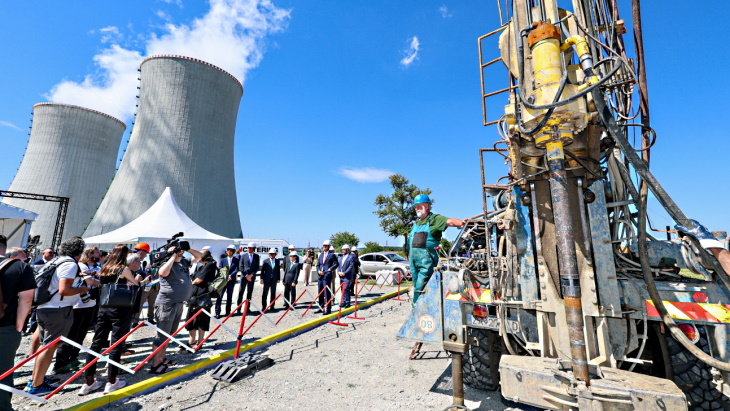Located in the Vysočina region of the Czech Republic, the Dukovany Nuclear Power Plant is the country' s first nuclear facility. Four VVER-440/V-213 pressurized water reactors entered operation between 1985 and 1987, with a total installed capacity of approximately 2040 MW. The plant generates around one-quarter of the nation’s electricity annually. Through successive modernization programs, operational efficiency and service life have been extended, creating a stable foundation for expansion.

(Image: KHNP)
Under its national energy transition plan, the Czech government aims to increase the share of nuclear power to 50% by 2050 and phase out coal-fired generation by 2033. The Dukovany expansion has been identified as a key project to achieve these objectives.
An international tender launched in 2022 invited bids from Westinghouse, EDF, and Korea Hydro & Nuclear Power (KHNP), offering AP1000, EPR-1200, and APR-1400 technologies, respectively. In July 2024, the government selected KHNP to supply and construct two APR-1400 units. The project’s total investment is estimated at CZK 407 billion (about USD 18.6 billion), making it the largest energy investment in Czech history. The government will hold an 80% stake in the project company EDU II.
Before the contract was signed, EDF filed a legal challenge to the procurement process, leading to a temporary injunction in May 2025. In June 2025, the Czech Supreme Administrative Court lifted the injunction, and EDU II formally signed the construction contract with KHNP. According to the current schedule, the first new unit is planned to start operation in 2036, followed by the second in 2038.
In August 2025, the expansion project entered the detailed site survey phase, which will provide technical data for reactor design and construction. The survey, expected to last about one year, covers geological structure, hydrological conditions, and seismic resistance.
Modernization of existing facilities is continuing in parallel, including turbine hall upgrades and the development of a district heating network to supply thermal energy to Brno and surrounding areas, improving the plant’s overall efficiency.
The APR-1400 is a Generation III+ pressurized water reactor developed by South Korea. Key characteristics include:
Electrical output: Approximately 1400 MWe per unit.
Design life: 60 years, with improved safety margins.
Safety systems: Incorporates advanced passive safety features and redundancy in critical systems to enhance resilience against severe accidents.
Construction record: Successfully deployed domestically at Shin Kori Units 3 and 4, and internationally at the Barakah Nuclear Power Plant in the UAE.
Compared to the existing VVER-440 units at Dukovany, the APR-1400 offers substantially higher output, longer design life, and upgraded safety systems that meet post-Fukushima international standards. The introduction of this technology will diversify the Czech Republic’s nuclear technology base beyond Russian-designed reactors.
The Dukovany expansion is expected to strengthen domestic energy security and alter the Central European energy market landscape. By incorporating APR-1400 technology, the Czech nuclear sector will diversify its technology portfolio. The project’s financing structure—featuring low-interest government loans and long-term revenue guarantees—also represents an innovative model within European nuclear project financing.
| Year / Date | Event |
|---|---|
| 1985–1987 | Four VVER-440 units commissioned |
| 2022 | International tender launched |
| July 2024 | KHNP awarded contract |
| May 2025 | Court injunction halts signing |
| June 2025 | Injunction lifted; contract signed |
| August 2025 | Detailed site survey begins |
| 2036 | First APR-1400 unit scheduled for operation |
| 2038 | Second APR-1400 unit scheduled for operation |
The Dukovany expansion marks a new phase in the Czech Republic’s nuclear development strategy. Once completed, it will significantly increase nuclear power’s share in the national energy mix and contribute to the long-term stability and decarbonization of the region’s energy supply.